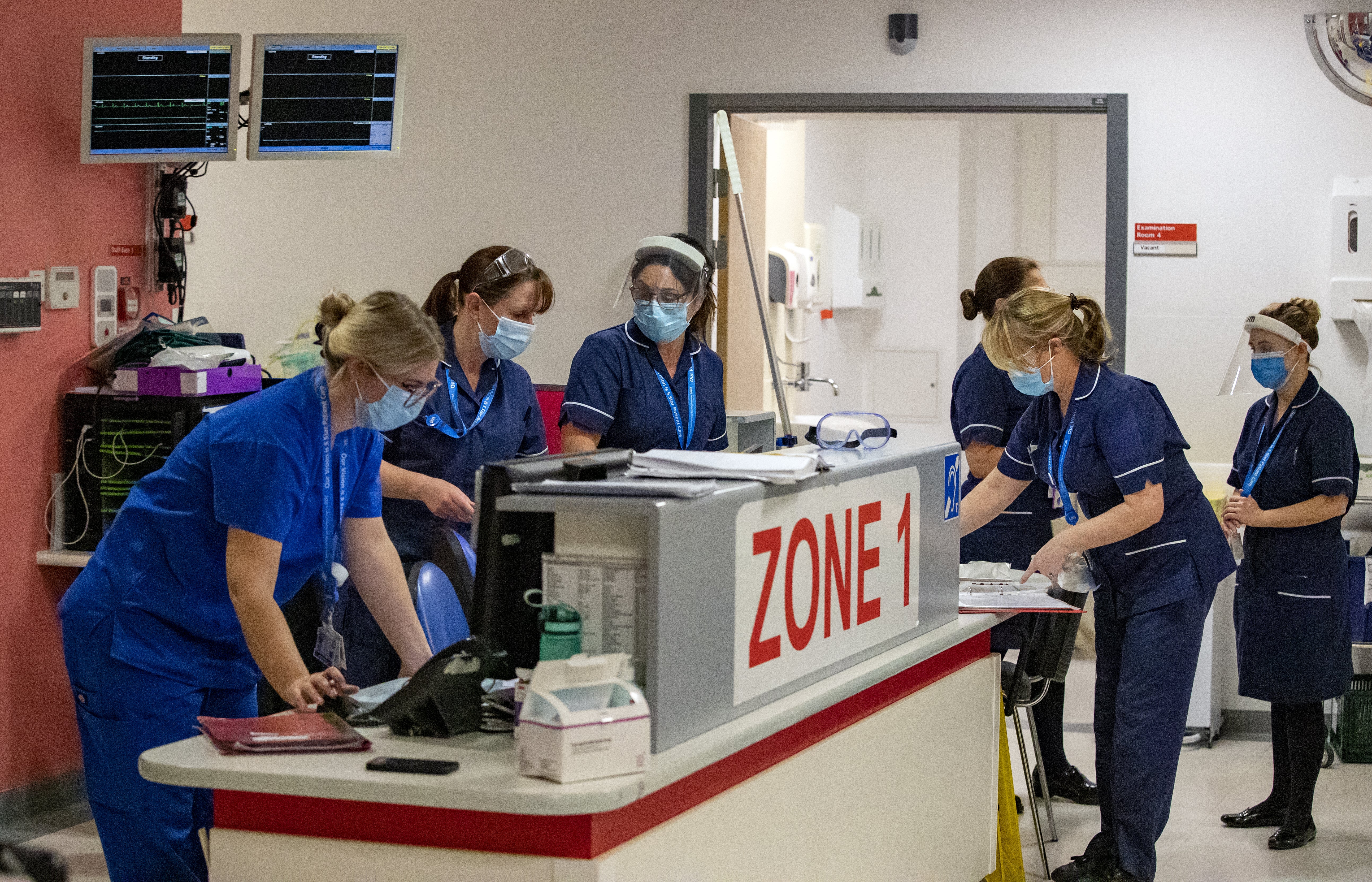NHS England reveals plans to replace A&E waiting time target
Changes will see waits measured as an average overall in first change for 15 years

Your support helps us to tell the story
From reproductive rights to climate change to Big Tech, The Independent is on the ground when the story is developing. Whether it's investigating the financials of Elon Musk's pro-Trump PAC or producing our latest documentary, 'The A Word', which shines a light on the American women fighting for reproductive rights, we know how important it is to parse out the facts from the messaging.
At such a critical moment in US history, we need reporters on the ground. Your donation allows us to keep sending journalists to speak to both sides of the story.
The Independent is trusted by Americans across the entire political spectrum. And unlike many other quality news outlets, we choose not to lock Americans out of our reporting and analysis with paywalls. We believe quality journalism should be available to everyone, paid for by those who can afford it.
Your support makes all the difference.NHS England is planning to scrap the four-hour waiting time target for A&E patients in a major shake-up designed to reduce the amount of time spent in emergency departments.
The measure, which requires 95 per cent of A&E patients to be seen within four hours, will be replaced with a series of more sophisticated targets that have been backed by clinical leaders.
The four-hour target was introduced in 2004 and has not been successfully met by the NHS in England since 2015.
Under a suite of new measures to monitor A&E performance, patients will need to be seen within 15 minutes of arriving at A&E for an initial assessment, and hospitals will be monitored based on an average time in the department.
If a doctor decides to admit a patient, hospitals will need to record how many patients were admitted within an hour of it being “safe to do so”.
The percentage of patients waiting more than 12 hours will also be monitored along with the percentage of ambulances able to hand over patients within 15 minutes.
To help improve the overall care of patients, local health systems overall could be given a performance rating alongside the 10 new measures of performance that will also include ambulance responses and the NHS 111 service.
Katherine Henderson, president of the Royal College of Emergency Medicine, told The Independent that the four-hour waiting time target had served the NHS well but was no longer enough to force through clinical improvements.
She said: “We welcome the explicit recognition about the harms of overcrowding for patients attending emergency departments. These proposals will offer a better framework on which to improve care. The proposed metrics provide greater insight into the causes of delay and what we can do to improve care for all patients.”
NHS England has launched a consultation on the plans after piloting different approaches in more than a dozen hospitals in 2019.
Medical director Stephen Powis said: “After a decade and a half it is only right that we look at how we measure urgent and emergency care with fresh eyes.
“There have been many innovations in urgent treatment in that time and it is important that they are reflected in how we assess patient care from start to finish.
“The coronavirus pandemic has only made it more important that we update the way we measure urgent care to ensure NHS services deliver what matters most to patients and clinically.”
NHS Providers, which represents hospital trusts, said more investment would be needed to achieve the targets.
Chief executive Chris Hopson said: “Delivery of the required changes and returning performance to the levels we saw when the NHS was meeting what will become the old 95 per cent four-hour standard will require significant investment. It’s therefore vital that we agree what funding will be needed and that the government then meets these funding requirements in full. Changing the way we measure performance will not, by itself, deliver the improvements to urgent and emergency care that patients need.
“If implemented, these changes must be seen as metrics for the whole urgent and emergency care pathway, indicating how well patients are moving between primary care, ambulance, hospital, community, and social care settings. For the transformation of the urgent and emergency care pathway to succeed, we need concerted action, appropriate funding and complete support for this approach across all the different organisations providing urgent and emergency care.”
A consultation by NHS England will last until 12 February here.

Join our commenting forum
Join thought-provoking conversations, follow other Independent readers and see their replies
Comments